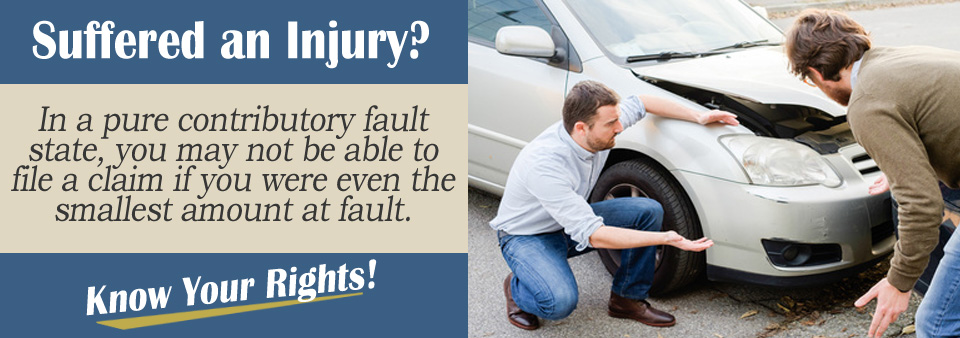All states handle the question of fault differently. For some, the issue of fault in personal injury cases does not make a difference, but for the majority of the country, fault at least plays some part in determining liability in a car accident and who should pay damages to the injured party.
One way states handle the question of fault is known as pure contributory fault. How is this type of fault handled and what does it entail?
We have asked attorney Alaina Sullivan about this type of negligence. Here how she laid it out:
Contributory Negligence
Before you can understand pure contributory fault, you need to understand the concept of contributory negligence. Contributory negligence involves negligent conduct on behalf of the injured party that “contributed” to the accident’s cause.
It exists on the theory that both parties are to blame, at least to some part. Different degrees of contributory negligence exist: pure contributory negligence and modified forms.
Pure Contributory Fault
Only a handful of states practice what is known as pure contributory negligence or fault. These areas include Alabama, Maryland, Virginia, North Carolina and the District of Columbia.
Under the pure form, if you, the injured party, contributed to the accident at all, you are completely barred from seeking compensation for your injuries, no matter how small your percentage of blame was.
Pure contributory fault exists for car accidents, but also non-driving accidents like dog attacks, defective products, slip and fall incidents and other accidents.
Why Is It Used?
Not many jurisdictions use the pure contributory negligence standard for one big reason: it is harsh. The plaintiff/injured party can be but one percent at fault and be completely kept from getting any compensation for his or her injures. That does not seem fair, does it?
Regardless, this defense is available to protect the rights of the defendant driver who is at fault. Essentially it was created to protect the other driver if he or she was at fault but not a significant portion.
However, because the defense can be used to keep injured parties who arguably deserve some justice and compensation from receiving it, most jurisdictions have gone to a less harsh standard.
Exceptions to the Pure Contributory Negligence Rule
The rule is harsh but exceptions do exist. For example, if the injured party can show that the defendant’s conduct was so negligent that it was considered willful and wanton, then the defendant cannot use the contributory negligence defense.
This protects the injured party in the event that they may be only a small percent, even one percent, at fault, but the damage and injuries caused by the defendant were so recklessly caused that it would be unjust for them to not receive compensation.
The injured party can also overcome the pure contributory negligence block if he or she can show that the defendant had the last clear chance to avoid the accident and chose not to do so.
Even if the plaintiff has been found to be contributory negligent, if it can be shown that, at the last minute, the defendant had the opportunity to do something to keep the accident from occurring but deliberately or negligently did not take this action for some reason, the injured party can overcome the pure contributory negligence bar from recovery.
Therefore, even some situations exist where this overly harsh negligence rule can be reduced. However, regardless of this exception, which is only rarely allowed or use, the majority of states out there have seen pure contributory negligence as unfair and overly harsh and have elected for a less restrictive standard, such as comparative negligence.
Comparative negligence reduces the amount of recovery an injured plaintiff receives based on the percentage of fault he or she played into the reason the accident happened. Different forms of comparative negligence exist, as well, and each state seems to have its own rule.
Contact an Attorney Today
If you have been involved in a car accident in a state where pure contributory negligence is the standard and have questions about your rights, it is always recommended you contact an attorney today to discuss your case if you do not currently have a lawyer or have any questions.
A licensed personal injury attorney will be able to evaluate your case and determine if you have a claim against the other party’s insurance company. To receive the compensation for your medical bills, property damages, and pain and suffering, you should speak with a personal injury attorney in your area today.
